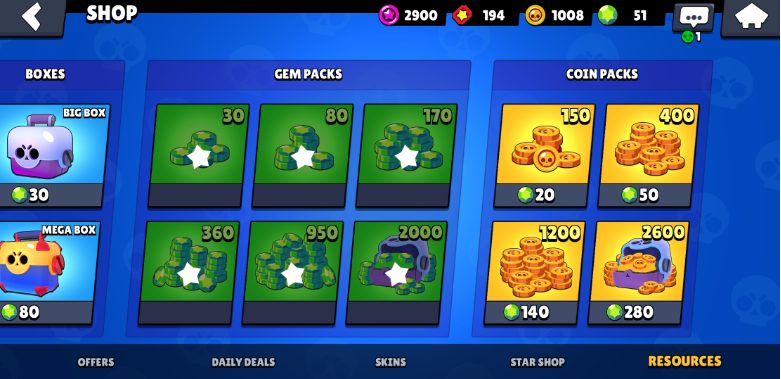Table of Content
It has been 12 years since mobile apps exploded into the scene. Over this time, app monetization methods have evolved, giving developers a decent chance to cover their app development costs and make money.
There are numerous monetization strategies you can adopt, and one of the most fruitful sources of revenue is in-app purchases, which account for 48.2% of app earnings.
What is an In-App Purchase
Any purchase made in a mobile app is called an in-app purchase. These purchases allow users to acquire exclusive features, content or services.
Let’s look at it with the example of the mobile game Subway Surfers. Imagine you are carefully playing it to break a friend’s or your own record.
 Loading screen of mobile game app Subway Surfers.
Loading screen of mobile game app Subway Surfers.
And the best way to make sure you don’t lose is by having Boosts with you. To get Boosts you need an in-game currency called Coin. To buy Coins, you pay real money. That is an in-app purchase (IAP).
 Boosts available as IAP in Subway Surfers.
Boosts available as IAP in Subway Surfers.
What Are the Different Types of In-App Purchases
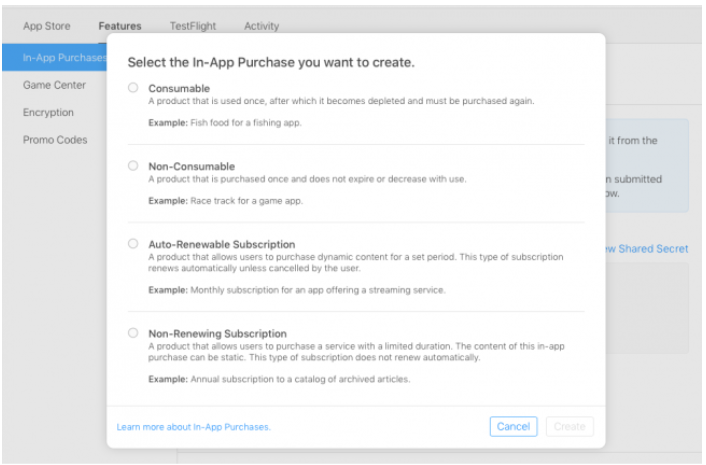 Selecting the type of IAPs in App Store Connect. Image Credit: raywenderlich.com
Selecting the type of IAPs in App Store Connect. Image Credit: raywenderlich.com
Consumable Purchases
Consumable purchases get “consumed” while using the app. In-game currency for mobile games is an example of this.
This form of purchases is primarily seen in free apps, where users can utilise the purchase to acquire special features or cut down their revival time in games. In most cases, these purchases can be used only within a single account, and can’t be shared.
Non-Consumable Purchases
While consumable purchases get exhausted, non-consumable purchases are more permanent, like special feature unlocks in an app. For example, the meditation app Headspace is free to download. But users can only access limited features in the app. To unlock the full set of features, users have to upgrade to the premium version.
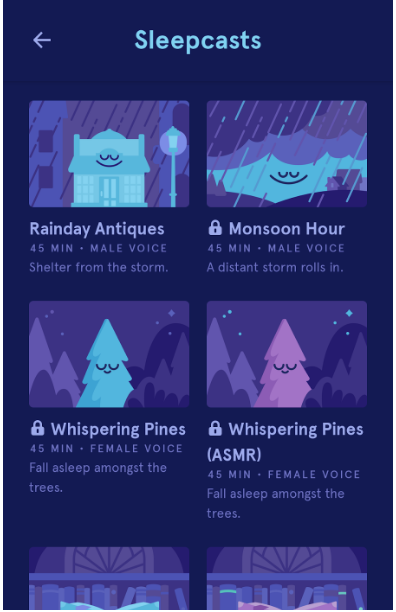 List of Sleepcasts in the Headspace app.
List of Sleepcasts in the Headspace app.
Auto-Renewable Subscriptions
With auto-renewable subscriptions, users need to pay a monthly or yearly subscription to access the content of an app. Netflix, The New York Times, and Hulu are examples of such apps. This type of in-app purchase renews automatically until cancelled by a user.
 The subscription model in The New York Times app.
The subscription model in The New York Times app.
Non-Renewable Subscriptions
Non-renewable subscriptions are more like consumable purchases with a limited time offer. The only difference is that non-renewable subscriptions expire with time and must be manually renewed by a user.
 A non-renewable subscription model with a one-time offer. Image Credit: stackoverflow.com
A non-renewable subscription model with a one-time offer. Image Credit: stackoverflow.com
How to Spot Apps With In-App Purchases
Whenever you download an app, a disclaimer “In-App Purchases” will be displayed near to the Get button in the App Store and close to the app’s title or Install button in the Play Store.
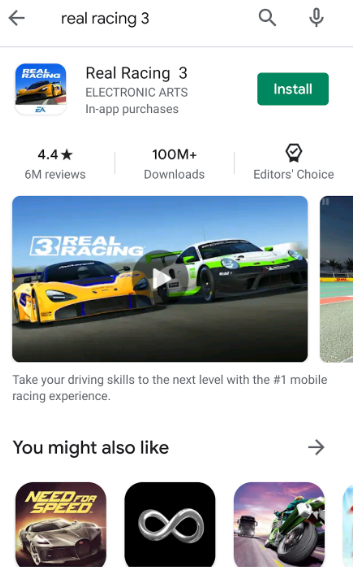 The mobile game app Real Racing 3 in the Play Store with an “In-App Purchases” disclaimer.
The mobile game app Real Racing 3 in the Play Store with an “In-App Purchases” disclaimer.
To get more details about IAPs, visit the About section of the app.
 The About section of the Real Racing 3 app.
The About section of the Real Racing 3 app.
Where to Find In-App Purchases and How to Buy Them
IAPs are located within an app and will generally be under a segment named in-app store, especially for game apps. In some cases, there won’t be an in-app store for IAPs. Instead, you can see IAPs as pop-ups whenever you try to access a premium feature or when you exhaust a consumable.
How to Enable In-App Purchases
iOS
To enable in-app purchases in iPhone,
1. Open Settings and tap on Screen Time.
2. Tap on Content & Privacy Restrictions.
 The Screen Time section of an iPhone. Image Credit: businessinsider.com
The Screen Time section of an iPhone. Image Credit: businessinsider.com
3. Now tap iTunes & App Store Purchases. If you are unable to open it, it means you haven’t set up Screen Time. If so, go to the next set of instructions.
4. Tap In-app Purchases.
 The App Store Purchases section of an iPhone. Image Credit: businessinsider.com
The App Store Purchases section of an iPhone. Image Credit: businessinsider.com
5. If the In-app Purchases is set to Don’t Allow, change it to Allow. IAPs are now enabled.
To set up Screen Time,
- Open Settings > Screen Time.
- Tap Turn On Screen Time and press Continue.
- Choose This is My [device] or This is My Child’s [device].
If you are still not able to enable IAPs, there is a possibility that the payment information associated with your ID has expired.
Android
In Android, IAPs are enabled by default. However, if you wish to secure each purchase by placing an authentication, follow these steps:
1. In the Play Store, tap on the hamburger menu on the upper-left corner of the screen.
 The home screen of the Play Store.
The home screen of the Play Store.
2. Scroll down and click on Settings.
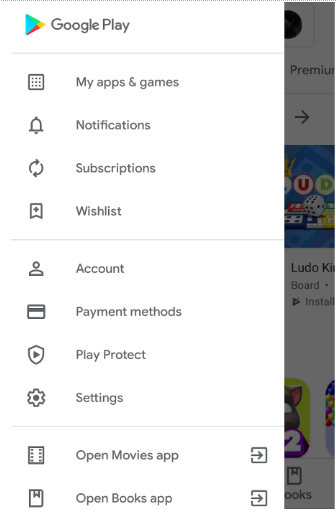 List of options after clicking the hamburger menu in the Play Store.
List of options after clicking the hamburger menu in the Play Store.
3. Scroll down to the bottom and click on Require authentication for purchases.
 Settings in the Play Store app.
Settings in the Play Store app.
4. Choose the degree of authentication you wish to implement.
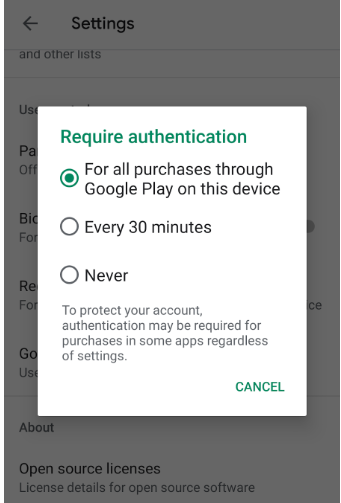 Choosing the type of authentication for in-app purchases in the Play Store.
Choosing the type of authentication for in-app purchases in the Play Store.
Can I Share In-App Purchases
In most cases, IAPs cannot be shared. However, some purchased contents like movies, TV shows or e-books can be shared.
Why Optimize In-App Purchases
You can’t just create in-app purchases in your app and expect revenue from it right away. For that, you need to optimize it systematically and make sure your users are convinced that they need to make the purchase.
Also, since the release of iOS 11, in-app purchases have become a part of App Store Optimization. The in-app purchases of an app are displayed on the product page, as well as in search results. When a user clicks on it, they are directly taken to the app to complete the purchase. The app is downloaded automatically if it is not already installed.
 An example of promoted IAP in the search results and product page. Image Credit: apple.com
An example of promoted IAP in the search results and product page. Image Credit: apple.com
How to Optimize In-App Purchases
The optimization of in-app purchases starts as early as the app’s development stage. The features must be developed in a manner that in-app purchases enhance the user experience. Here are the most crucial components of in-app purchases you need to optimize.
Attractive Title
IAP titles need to be catchy and must be something that will encourage users to buy them. The titles don’t have to be precisely what the items are. You can make it funny so that it sticks with the users.
 An IAP popup explaining the use of an item in Subway Surfers.
An IAP popup explaining the use of an item in Subway Surfers.
Persuasive Description
The description gives users an explanation of what the item is and how it is beneficial. Try making it witty like the title and focus on the pain points of the users and how these items can help them use the app better.
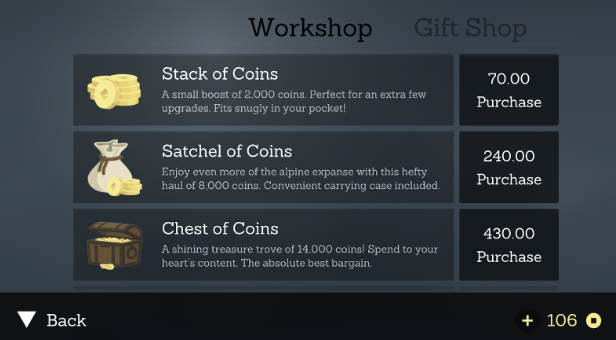 The in-app store in the mobile game app Alto’s Adventure.
The in-app store in the mobile game app Alto’s Adventure.
For example, in the endless snowboarding game, Alto’s Adventure, each item’s description is written as if the users are buying them for real-life use and not for the character. To highlight that, the description of “Satchel of Coins” depicts how the items are convenient to carry around.
Personalised Items
By offering customised and personalised items, chances are greater for users to make purchases. For example, you can add a user’s name into item tiles or even design items based on the user’s initials. This personalisation would be hard for users to resist.
In-App Store
For in-app purchases, an appealing, easy to access, in-app store is essential. Make sure you experiment with the layout and item ordering to achieve the combination that users will find most pleasing.
Icons
Along with making the in-app store look attractive, the icons of each item must reflect what the item is about. Of course, it doesn’t have to look exactly like the item, but users must not feel cheated after purchasing them. You can also use icons to tempt users to buy higher-priced articles.
Colours
 A chart showing the colour psychology used for designs. Image Credit: ecommerce-nation.com
A chart showing the colour psychology used for designs. Image Credit: ecommerce-nation.com
Use colour psychology to design not just the in-app store but even the icons of items. You can use different colours to convey different emotions and also grab attention or create urgency to tempt users into making a purchase.
Bundles
Offering bundles of different items is a great strategy to entice customers as they will pay less compared to buying each item individually. This is also an opportunity for developers to include less performing items into the bundles and have users try them.
 The in-app store of Subway Surfers.
The in-app store of Subway Surfers.
You can tempt users to spend more money by offering rewards for purchasing higher-priced bundles.
Timing
When it comes to in-app purchases, timing plays a huge role. If an app makes purchase recommendations when users need them the most, chances are high that a purchase will be made.
For example, in a game like Temple Run, players are more likely to purchase an extra life to recover, especially if they are trying to defeat a high score.
You can leverage time to boost in-app purchases by three approaches.
1. Limited-Time Offers
The feeling of urgency drives sales like nothing else. If you include limited deals in your app, users are more likely to purchase them almost impulsively. List the benefits and use a countdown timer to let the users know that the deal is a steal.
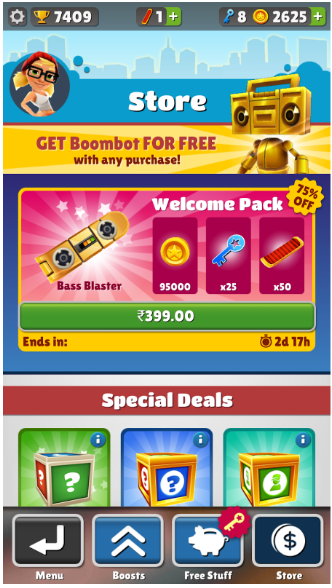 The IAP limited-time offers of Subway Surfers.
The IAP limited-time offers of Subway Surfers.
2. Save Option
As discussed before, the “Save Me” option to revive a character in games like Temple Run or Alto’s Adventures will tempt users to make purchases so they do not lose their progress. This strategy works especially if the users are about to break their high scores or their friends’.
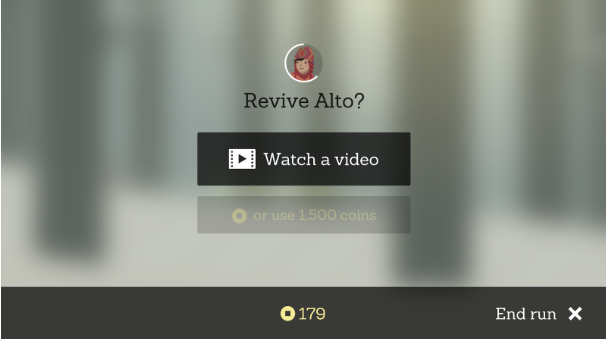 The revival screen in the mobile game app Alto’s Adventure.
The revival screen in the mobile game app Alto’s Adventure.
3. Instant Access
If your app (especially if it’s a game) is really intriguing, chances are high that users will pay for progressing the levels faster. In such cases, you can force users to wait for a specific period of time before they can access certain features. Along with that, offer them an in-app purchase option to access the feature instantly. If they are in a hurry to know what’s next, they will pay for instant access.
For example, in the Ludo game app, users have to complete a set of missions before unlocking specific themes. Alternatively, they can instantly access the theme by making an in-app purchase.
 Popup showing an IAP offer for accessing a featured content in the Ludo app.
Popup showing an IAP offer for accessing a featured content in the Ludo app.
While making users wait for unlocking a feature, ensure you don’t overdo the process as they might feel demotivated with it. Also, try including a countdown timer and reward them for waiting.
Behavioural Analytics
Along with understanding how well your app is performing, analysing the in-app behaviour of users is crucial to determine who is likely to perform an in-app purchase. This will help in segmenting users who are loyal to the app and needs just a small push to make a purchase. You can send those users small incentives and tempt them to make a purchase.
Here’s a list of some behaviour analytics tool to consider:
Convince Them
In-app purchases can’t be rushed. Around 44% of users made their first in-app purchase only after interacting with the app at least ten times. To make sure a user engages with your app, you need to provide them with exceptional user experience right from the start.
Try Before You Buy
Just like trying out clothes, trying out features in an app before buying will give users more confidence and assurance. For example, the photo editing app Polish allows users to try the Pro Filters without upgrading, but they won’t be able to save the pictures.
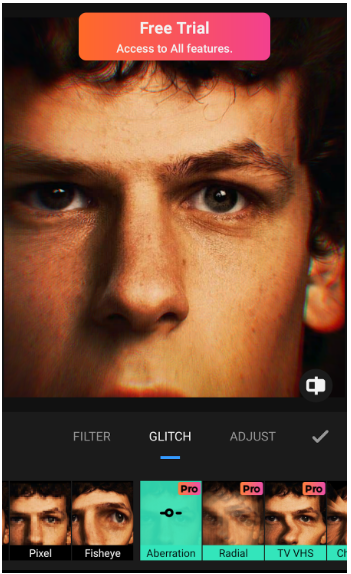 Polish app allows users to try premium filters without the Pro version.
Polish app allows users to try premium filters without the Pro version.
Rewards
Just like giving users a taste of an item through try and buy, providing limited quantities of an item whenever a task is accomplished will motivate the user to spend more time with the app. If they find the items to be beneficial, they are most likely to purchase them.
 Rewards in Subway Surfers for setting a new high score.
Rewards in Subway Surfers for setting a new high score.
Daily Gifts
Daily gifts are a great way to retain users. Set up a gifting model in which users receive a gift each day they open the app. The more consecutive days they open the app, the higher the gift value becomes. The mobile game app, Ludo, follows this strategy and has more than 100 million downloads in the Play Store.
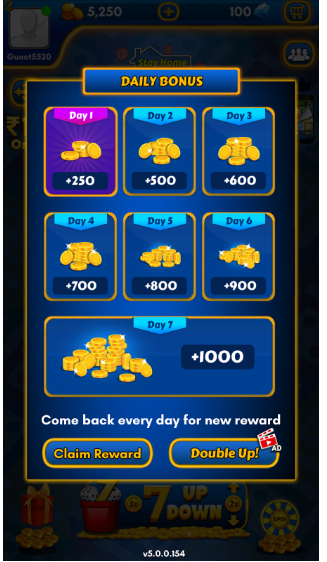 The daily bonus popup of the Ludo app.
The daily bonus popup of the Ludo app.
Along with retaining users, daily gifts may help in turning casual users into loyal ones as using the app becomes a part of their daily routine. This will also increase the chances of them purchasing items.
Healthy Motivation
By displaying special or limited features which can only be unlocked after reaching a specific level, you will motivate users to spend more time with the app. You can then entice them to pay for early access.
Promoting In-App Purchases On Apple App Store
As discussed before, in-app purchases have become a part of App Store Optimization (ASO) and can show up on your product page. Along with that, you can promote your in-app purchases in search results. This will help in driving installs, even if users aren’t searching for your app.
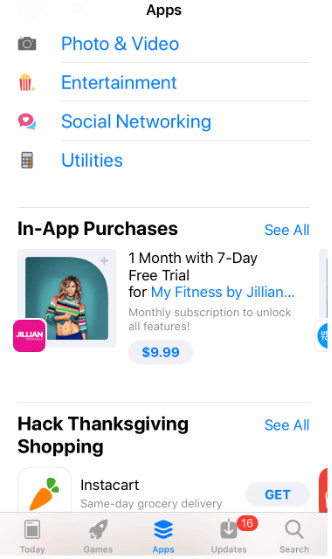 A promoted IAP in the App Store.
A promoted IAP in the App Store.
Only non-consumable in-app purchases or subscriptions will be displayed in the search results. On your product page, you can include as many IAPs as you want, but you can promote only 20 IAPs at a time.
Using IAP, you can utilise relevant keywords and improve your chances of ranking higher in the search results. You can also change the visibility and order of IAP displayed to users. For example, if a user has already purchased a specific item, then that IAP won’t be shown to them. Also, if a user shows interest in a particular topic, the IAPs related to it will be shown.
Components of In-App Purchase Promotions
1. Display Name
When selecting the display name, make sure they are easily understood by the users as well as potential customers who found the IAP through search. The display names can be 30-characters long. Make sure the names reflect your app and its purpose.
2. Description
The descriptions can be 45-characters long and must complement the title and give more information on why the IAP is the best bargain.
3. Promotional Image
The promotional image plays a crucial role to grab a user’s attention and depict what the in-app purchase is all about. Make sure that the promotional images are not confused with app screenshots or icons. If your IAP is displayed outside of your app page, the App Store automatically adds the app icon to the image.
You can upload 1024×1024 PNG or JPEG files as promotional images. The image must be 72 dpi, RGB scheme and must be flattened with no round corners. Even though the image is large in resolution, the images will be displayed in small sizes. Make sure the images are capable of scaling down to small sizes gracefully.
For more information about designing your promotional images, check out Apple UI Design Resources.
Don’t Overdo In-App Purchases
When you plan for an in-app purchase revenue model, make sure you don’t overdo it, and that there is a satisfying amount of free content in the app.
In 2016, Nintendo released its first mobile game on the App Store, the Super Mario Run. Although it was a freemium app, users could only play the first three levels for free, after which they had to make an in-app purchase of $10 to unlock the remaining levels.
 Popup screen showing the need to purchase the full version of Super Mario Run to progress.
Popup screen showing the need to purchase the full version of Super Mario Run to progress.
The company soon faced a huge backlash from online communities which reduced its share price by 5%.
 The change in Nintendo’s share price after the release of Super Mario Run. Image Credit: statista.com
The change in Nintendo’s share price after the release of Super Mario Run. Image Credit: statista.com
Wrapping It Up
Mobile app monetization strategies, especially in-app purchases, are a great way to generate revenue. Make sure you plan ahead and complement the revenue model right from an app’s development phase.
In the long run, it all boils down to how each user feels about your app. To make the best out of in-app purchases, you need to invest more time in building the user experience of the app. Grow your user base and adopt strategies to build loyalty. Also, experiment with each component of your IAP and analyse what works best for different segments of users.
If you’re looking for a top-notch Mobile App Developer, your search ends here! One of the renowned App Developer in Malaysia has what it takes to bring your mobile app ideas come to life and produce results. Contact us now for more expert developers.

